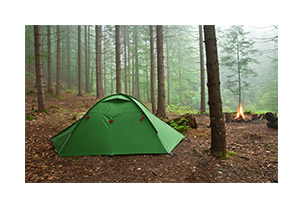Although I grew up in the suburbs, I attended elementary school in the heart of the city of Allentown. One day, when I was in the fourth grade, we students were busy drawing and coloring. An eager classmate proudly displayed his artwork for all to see. “What is it?” inquired the teacher. “It’s a pumpkin tree!” announced the young Leonardo da Vinci. Sure enough, there, in vivid colors, was a depiction of a sturdy tree laden with large, bright-orange spheres. I couldn’t help laughing out loud. (May God forgive me!) It was hard for me to imagine someone so unfamiliar with trees, gardens, and fields. “It’s a good thing there are no pumpkin trees,“ I thought. “Sir Isaac Newton could have been killed before ever having discovered gravity!”
In a world where housing developments are continually swallowing up the fields and meadows of our childhood, in an age when many of us seem resigned to living with pollution, more and more young people are unaware of the glories of nature. They are left only to imagine what the unspoiled outdoors is really like.
Unfortunately, learning about the value of a clean environment also means learning about the dangers of pollution. What is the best way to teach urban children these important lessons? Are we to encase young people in pollution-proof bubbles? Impossible! Are we to expose them to all manner of pollutants in the hope of making them immune to the harmful effects of environmental toxins? Unthinkable!
When it comes to instructing youngsters about the hazards of pollution, there is, I think, a happy medium between total avoidance on the one hand, and total immersion on the other. The answer: The fresh air camp. To put it quite simply, a fresh air camp is a place where children can learn all about pollution without having to breathe it in.
A friend of mine used to be a counselor at a fresh air camp. He told me that, initially, his campers would always moan and groan about being away from their familiar city surroundings and electronic entertainment–no stereo, no TV, no video games. After about three days, however, Mother Nature would begin to work her salutary miracles. The youngsters would begin walking around with ears, eyes, and mouths wide open for the sheer wonder of creation. The most spectacular transformations would occur when the new nature enthusiasts were given their first opportunity to behold the heavens on a clear night. Freed from the obscuring cataracts of air and light pollution, the campers would gaze, faces upturned and expressions intent, drinking in the glory of the stars. To be away from pollution is to see what others cannot hope to see.
The time at camp would all too quickly come to a close, and the young people would once again find themselves in the world of exhaust fumes and neon lights. Yet they would be permanently changed–changed for the better. They had seen the night sky as God meant it to be seen, and this vision would remain with them for the rest of their lives. Above all, they would recognize air and light pollution, not as inescapable realities of human existence, but as anomalies that are far from ubiquitous, let alone inevitable.
When I was in the fourth grade, all the adults in my life–my parents, my teachers, my pastor, and even the people I saw on television–all spoke the same message with regard to what was right and wrong, or at least they never contradicted one another. Today, however, younger generations are given all sorts of mixed moral messages. Young people are told to “be good,” but the idea of goodness is never clearly defined. Our society has forgotten that moral values–like pumpkins–do not grow on trees!
In a world that seems ever more confused about morality, in an age which recognizes no sin except that of intolerance, what is the best way to teach children about good and evil, about right and wrong? Are we to envelop them in protective bubbles in an attempt to shield them from anything evil? Impossible! Are we to expose young people to all manner of evil, hoping to desensitize them to sin and thus get them ready for “the real world”? Unthinkable!
Yet if we regard evil as moral pollution, the answer is clear. There is a happy medium between avoiding evil on the one hand, and immersion in evil on the other. There is a moral equivalent of the fresh air camp–and that is the Catholic school.
A Catholic school (including a Catholic home school) is not merely a private academic institution that happens to offer classes in religion. Ideally, it is a place where children and teens can learn all about evil without having to breathe it in. Above all, it is an environment wherein students are exposed to the very best that human culture and divine revelation have to offer. Young people may complain about the extra discipline, but that is to be expected. In time, they will be changed for the better. They will come to see things that others are unable to see. They will recognize sin, not as the norm for human existence, but as an aberration. They will learn what is ultimately important. They will come to know the destiny God intends for all human beings. They will be given a priceless treasure that will stay with them all their lives. In other words, they will gain a vision of Heaven.

